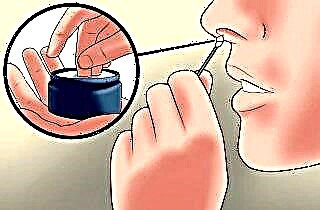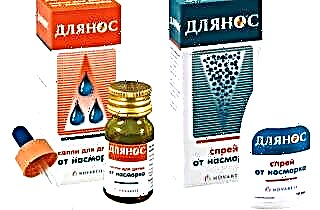Mustard plasters are an effective and simple remedy familiar to everyone from childhood, which allows you to quickly get rid of colds and coughs. It is considered absolutely harmless, therefore, mustard plasters are most often given to babies when they cough. But some mothers do not even know that it is necessary to put mustard plasters correctly, and this remedy does not help with any type of cough - mustard plasters have certain indications for use. And that is not all. Do you know at what age you can start putting mustard plasters on children? Let's talk about this in more detail.
Operating principle
 How does it work at all? After all, a mustard plaster is a simple piece of paper smeared with mustard paste, or a non-woven bag, divided into sections filled with mustard powder. That is, the only active ingredient is ordinary mustard, which in itself has no healing properties.
How does it work at all? After all, a mustard plaster is a simple piece of paper smeared with mustard paste, or a non-woven bag, divided into sections filled with mustard powder. That is, the only active ingredient is ordinary mustard, which in itself has no healing properties.
The therapeutic effect is achieved due to the fact that the mustard plaster soaked in water and placed on the body begins to actively irritate the skin. It is affected by the glycoside sinalbin, which is contained in mustard seeds. Irritation triggers a chain of responses:
- dilation of blood vessels and capillaries;
- activation of blood circulation;
- increased heart rate;
- removal of clamps and spasms;
- starting regeneration processes.
In addition, mustard plasters help relieve pain, or rather, act as a distraction. If the irritation is strong, then the body begins to produce endorphins to block unpleasant sensations. In fact, setting mustard plasters is a full-fledged physiotherapy procedure that is easy to carry out at home.
Indications for use
Mustard plasters have the best therapeutic effect in the treatment of acute respiratory diseases and their main and most problematic symptom - cough. Although they can be used as an adjunct and in the treatment of many other diseases: migraines, neuroses, hypertension, neuralgia, angina pectoris. Mustard plasters help relieve pain and relieve pain from sprains and severe bruises.
The therapeutic effect of coughing largely depends on how correctly the diagnosis is made and the place for the imposition of mustard plasters is chosen. After all, the throat can hurt in different ways, and the cough is dry or wet, soft or harsh, wheezing, barking, paroxysmal, suffocating, nocturnal, or there is a constant coughing.
 The intensity and nature of a cough can often indicate the cause of the disease, the stage at which it is located, and even a preliminary diagnosis. True, only an experienced doctor can understand all the intricacies, especially with bronchospasm in a child. Depending on the diagnosis, a place is also chosen where it is better to put mustard plasters when coughing:
The intensity and nature of a cough can often indicate the cause of the disease, the stage at which it is located, and even a preliminary diagnosis. True, only an experienced doctor can understand all the intricacies, especially with bronchospasm in a child. Depending on the diagnosis, a place is also chosen where it is better to put mustard plasters when coughing:
- Colds, acute respiratory infections, rhinitis: on the legs (feet or calves), the area of the 7th cervical vertebra;
- Acute tracheitis, the initial stage of bronchitis: the upper part of the chest, under the jugular cavity;
- Acute bronchitis: chest, trapezius muscle;
- Chronic bronchitis, pneumonia: whole chest front, back and sides.
In some zones, mustard plasters are not placed on a child in any case. This is the area of the heart (with the exception of an attack of angina pectoris), nipples, mammary glands. But on any other place, you also need to put mustard plasters correctly so that the procedure will bring maximum benefit.
Caveats
 If you ask any person if he knows how to put mustard plasters correctly, the answer will invariably be yes. But in reality it turns out that more than half of adults do not know the basic safety rules and clear technology for carrying out this simple procedure. Because of this, many patients have a sharply negative attitude towards her - they say, it hurts, but there is no sense.
If you ask any person if he knows how to put mustard plasters correctly, the answer will invariably be yes. But in reality it turns out that more than half of adults do not know the basic safety rules and clear technology for carrying out this simple procedure. Because of this, many patients have a sharply negative attitude towards her - they say, it hurts, but there is no sense.
It is especially important to know how to put mustard plasters on children. The child's skin is very delicate and sensitive, an incorrectly performed procedure can cause severe irritation on it, a chemical burn, and provoke an allergic reaction. Therefore, it is strictly forbidden to use mustard plasters for the treatment of newborns and babies under 2 years old.
For children from 2 to 6 years old, the duration of the procedure should be no more than 5 minutes. In this case, it is necessary to constantly monitor the condition of the skin (every 2 minutes). The child may cry constantly during the procedure, but this does not mean that he is experiencing too much pain - he just does not like it all.
It is necessary to ensure that the skin at the site of exposure to the mustard plaster is moderately pink (not bright red!). As soon as the intensity of redness increases, the mustard plasters must be removed immediately.
How to put mustard plasters correctly
 It is worth preparing in advance everything you need for the procedure: the mustard plasters themselves (pay attention to the expiration date!), A bowl of warm water, clean gauze, greasy cream or petroleum jelly, a terry and paper towel, a warm blanket. The skin at the site of the intended impact must be carefully examined - it must be clean and not damaged.
It is worth preparing in advance everything you need for the procedure: the mustard plasters themselves (pay attention to the expiration date!), A bowl of warm water, clean gauze, greasy cream or petroleum jelly, a terry and paper towel, a warm blanket. The skin at the site of the intended impact must be carefully examined - it must be clean and not damaged.
The procedure itself is really simple:
- Lubricate the skin with petroleum jelly or nourishing cream (for children under 6 years of age or with hypersensitive skin) and wait 2-3 minutes for it to be absorbed. This will somewhat reduce the intensity and depth of the effect of the drug, but will protect delicate skin from severe irritation.
- If the mustard plaster is packaged, shake it several times so that the powder is evenly distributed.
- Dip the mustard plaster in a bowl of warm (40-50 ° C) water for 3-5 seconds and then let the water drain completely.
- Put the mustard plaster (if it is a sheet of paper, then the mustard side down) in the chosen place.
 Cover the top with a terry towel and cover the baby with a warm blanket. If we put a mustard plaster on our legs, put on warm socks or knee-highs.
Cover the top with a terry towel and cover the baby with a warm blanket. If we put a mustard plaster on our legs, put on warm socks or knee-highs.- Hold for 2 to 10 minutes, constantly checking the condition of the skin. 10 minutes is the maximum exposure time for a child under 14 years old!
- Remove the mustard plasters and gently rinse off the remaining powder with gauze soaked in warm water.
- Pat dry the skin with a paper towel.
- Apply a nourishing or soothing cream and distribute it evenly over the entire surface of the skin.
- If the child sweats during treatment, be sure to change him into dry clothes.
It is better to perform the procedure before bedtime - in the daytime or in the evening. With a wet cough, mustard plasters can provoke increased sputum discharge, and it will not let the baby sleep at night, so in this case it is worth doing the procedure during the day.
With a dry cough, deep warming up at night will prevent severe nocturnal attacks and help you spend the night calmly.
You can put mustard plasters when coughing every other day. It is imperative to take into account the condition of the skin. If, after the previous procedure, redness remains or peeling has begun, you cannot put a mustard plaster in the same place. Then it is better to alternate: chest-break-back-break and so on in a circle. The course is a maximum of 10 procedures, after which it is worth taking at least a two-week pause. The therapy can then be repeated as needed.
Contraindications
There are also contraindications, in the presence of which it is impossible to put mustard plasters when coughing. The first and most important of them is the body temperature above 37.2-37.5 ° C. It is especially dangerous to carry out this procedure in acute conditions, when the temperature reaches 38-39 ° C. In general, this method of treatment is not used at the peak of the exacerbation of the disease. Mustard plasters are more suitable for the recovery stage, when it is necessary to stimulate the recovery processes in the body.
 Mustard plasters for coughing in children are also not used for such concomitant diseases:
Mustard plasters for coughing in children are also not used for such concomitant diseases:
- dermatitis, eczema, furunculosis, neurodermatitis;
- oncology and any other neoplasms;
- violation of blood clotting;
- open tuberculosis, pulmonary hemorrhage;
- serious cardiovascular disease;
- absence or severe decrease in skin sensitivity.
In case of any violations of the integrity of the skin in the places where the mustard plasters are installed, they can cause very strong burning and inflammation.
Children prone to severe allergic reactions should only be given mustard plasters after the test. You need to cut off a small piece of mustard plaster (about 2x2 cm) and put it on the child's handle or leg, holding it for 2-3 minutes. If there are no obvious signs of allergy within two hours, the baby will tolerate the procedure well.
Peculiarities
 Violation of safety measures and the rules of the procedure can lead to complications. So, treatment with mustard plasters against a background of elevated temperature will provoke a strong fever. If you put them in the same place several times in a row, without waiting for the redness to completely disappear, hyperpigmentation and severe peeling may appear.
Violation of safety measures and the rules of the procedure can lead to complications. So, treatment with mustard plasters against a background of elevated temperature will provoke a strong fever. If you put them in the same place several times in a row, without waiting for the redness to completely disappear, hyperpigmentation and severe peeling may appear.
Installing mustard plasters on the heart area (without medical indications) can cause an attack of tachycardia. You should not put the product on the shoulder blades - there they will cause local skin irritation, but will not be able to affect the organs lying deeper.
If a skin burn occurs, the procedure cannot be repeated until it is completely healed, which can be accelerated by using the Solcoseryl, Rescuer, etc. ointments.
It is important to avoid drafts and hypothermia after the procedure, especially in the first hours - this can greatly complicate the further course of the disease. Better to drink warm tea and stay in bed for a couple more hours. And remember that mustard plasters are just an additional aid to a child's cough, and not the main medicine. If after 2-3 procedures there is no significant improvement in the patient's condition, it is necessary to go for a consultation with a doctor.

 Cover the top with a terry towel and cover the baby with a warm blanket. If we put a mustard plaster on our legs, put on warm socks or knee-highs.
Cover the top with a terry towel and cover the baby with a warm blanket. If we put a mustard plaster on our legs, put on warm socks or knee-highs.

